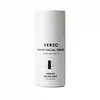What's inside
What's inside
 Key Ingredients
Key Ingredients

 Benefits
Benefits

 Concerns
Concerns

 Ingredients Side-by-side
Ingredients Side-by-side

Water
Skin ConditioningButylene Glycol
HumectantPentylene Glycol
Skin ConditioningNiacinamide
SmoothingPolyacrylate Crosspolymer-6
Emulsion StabilisingZinc PCA
HumectantRetinyl Retinoate
Skin ConditioningCurcuma Longa Root Extract
MaskingGlycerin
HumectantCanola Oil
EmollientSodium Hyaluronate
HumectantPortulaca Oleracea Extract
Skin ConditioningLactic Acid
BufferingEthylhexylglycerin
Skin ConditioningBiosaccharide Gum-4
Skin ConditioningT-Butyl Alcohol
PerfumingTocopheryl Acetate
AntioxidantPhenoxyethanol
PreservativeWater, Butylene Glycol, Pentylene Glycol, Niacinamide, Polyacrylate Crosspolymer-6, Zinc PCA, Retinyl Retinoate, Curcuma Longa Root Extract, Glycerin, Canola Oil, Sodium Hyaluronate, Portulaca Oleracea Extract, Lactic Acid, Ethylhexylglycerin, Biosaccharide Gum-4, T-Butyl Alcohol, Tocopheryl Acetate, Phenoxyethanol
Water
Skin ConditioningCaprylic/Capric Triglyceride
MaskingHydrogenated Lecithin
EmulsifyingPentylene Glycol
Skin ConditioningSimmondsia Chinensis Seed Oil
EmollientGlycerin
HumectantPalmitic Acid
EmollientC12-16 Alcohols
EmollientSqualane
EmollientPalmitoyl Glycine
CleansingRetinyl Retinoate
Skin ConditioningCurcuma Longa Root Extract
MaskingCeramide NP
Skin ConditioningTocopheryl Acetate
AntioxidantMagnesium Palmitoyl Glutamate
Skin ConditioningTetrahydrodiferuloylmethane
AntioxidantTetrahydropiperine
Skin ConditioningCanola Oil
EmollientPalmitoyl Proline
Skin ConditioningPseudostellaria Heterophylla Extract
Sodium Palmitoyl Sarcosinate
CleansingXanthan Gum
EmulsifyingAcrylates/C10-30 Alkyl Acrylate Crosspolymer
Emulsion StabilisingCaprylyl Glycol
EmollientSodium Hydroxide
BufferingPropanediol
SolventCaprylhydroxamic Acid
Tocopherol
AntioxidantHelianthus Annuus Seed Oil
EmollientParfum
MaskingWater, Caprylic/Capric Triglyceride, Hydrogenated Lecithin, Pentylene Glycol, Simmondsia Chinensis Seed Oil, Glycerin, Palmitic Acid, C12-16 Alcohols, Squalane, Palmitoyl Glycine, Retinyl Retinoate, Curcuma Longa Root Extract, Ceramide NP, Tocopheryl Acetate, Magnesium Palmitoyl Glutamate, Tetrahydrodiferuloylmethane, Tetrahydropiperine, Canola Oil, Palmitoyl Proline, Pseudostellaria Heterophylla Extract, Sodium Palmitoyl Sarcosinate, Xanthan Gum, Acrylates/C10-30 Alkyl Acrylate Crosspolymer, Caprylyl Glycol, Sodium Hydroxide, Propanediol, Caprylhydroxamic Acid, Tocopherol, Helianthus Annuus Seed Oil, Parfum
Ingredients Explained
These ingredients are found in both products.
Ingredients higher up in an ingredient list are typically present in a larger amount.
Canola Oil is Rapeseed oil with low amounts of erucic acid. It is an emollient and helps hydrate the skin. Emollients help hydrate and soften your skin by trapping moisture.
The comedogenic rating of canola oil is 4.
Canola oil contains Vitamin E, Vitamin K, and fatty acids such as linoleic acid.
Learn more about Canola OilCurcuma Longa Root Extract is from the spice, turmeric. Besides being a healthy and delicious spice, turmeric also has plenty of skincare benefits. It has anti-inflammatory, antioxidant, and anti-microbial properties.
Turmeric contains curcumin, an antioxidant. Antioxidants help neutralize unstable free-radical molecules. Free-radical molecules may damage your skin's cells and DNA. Curcumin may help with anti-aging.
Curcumin also has anti-inflammatory properties and can help soothe skin and reduce irritation. On top of that, curcumin has been shown to help prevent hyperpigmentation from sun damage.
The anti-microbial property of turmeric can make it effective in treating acne. This property has also been shown to help regulate the production of sebum.
Learn more about Curcuma Longa Root ExtractGlycerin is already naturally found in your skin. It helps moisturize and protect your skin.
A study from 2016 found glycerin to be more effective as a humectant than AHAs and hyaluronic acid.
As a humectant, it helps the skin stay hydrated by pulling moisture to your skin. The low molecular weight of glycerin allows it to pull moisture into the deeper layers of your skin.
Hydrated skin improves your skin barrier; Your skin barrier helps protect against irritants and bacteria.
Glycerin has also been found to have antimicrobial and antiviral properties. Due to these properties, glycerin is often used in wound and burn treatments.
In cosmetics, glycerin is usually derived from plants such as soybean or palm. However, it can also be sourced from animals, such as tallow or animal fat.
This ingredient is organic, colorless, odorless, and non-toxic.
Glycerin is the name for this ingredient in American English. British English uses Glycerol/Glycerine.
Learn more about GlycerinPentylene glycol is typically used within a product to thicken it. It also adds a smooth, soft, and moisturizing feel to the product. It is naturally found in plants such as sugar beets.
The hydrophilic trait of Pentylene Glycol makes it a humectant. As a humectant, Pentylene Glycol helps draw moisture from the air to your skin. This can help keep your skin hydrated.
This property also makes Pentylene Glycol a great texture enhancer. It can also help thicken or stabilize a product.
Pentylene Glycol also acts as a mild preservative and helps to keep a product microbe-free.
Some people may experience mild eye and skin irritation from Pentylene Glycol. We always recommend speaking with a professional about using this ingredient in your routine.
Pentylene Glycol has a low molecular weight and is part of the 1,2-glycol family.
Learn more about Pentylene GlycolRetinyl Retinoate is a new member of the retinoid family. It is created by combining retinoic acid (aka Tretinoin) and retinol.
Upcoming research shows this ingredient to be as effective but less irritating than retinol. Retinoids are the anti-aging gold standard of the skincare world.
All retinoids are inactive until they are converted into retinoic acid, a biologically active drug.
Retinoids undergo a conversion process until it reaches the last step, which is retinoic acid. Therefore, retinoic acid/Tretinoin is the most effective of all retinoids because it does not need to be converted.
Retinyl Retinoate is immediately broken down into retinoic acid and retinol, therefore becoming active right away.
Retinoids are best used to:
Further research is needed for this upcoming ingredient, but the results look promising so far.
Learn more about Retinyl RetinoateTocopheryl Acetate is AKA Vitamin E. It is an antioxidant and protects your skin from free radicals. Free radicals damage the skin by breaking down collagen.
One study found using Tocopheryl Acetate with Vitamin C decreased the number of sunburned cells.
Tocopheryl Acetate is commonly found in both skincare and dietary supplements.
Learn more about Tocopheryl AcetateWater. It's the most common cosmetic ingredient of all. You'll usually see it at the top of ingredient lists, meaning that it makes up the largest part of the product.
So why is it so popular? Water most often acts as a solvent - this means that it helps dissolve other ingredients into the formulation.
You'll also recognize water as that liquid we all need to stay alive. If you see this, drink a glass of water. Stay hydrated!
Learn more about Water